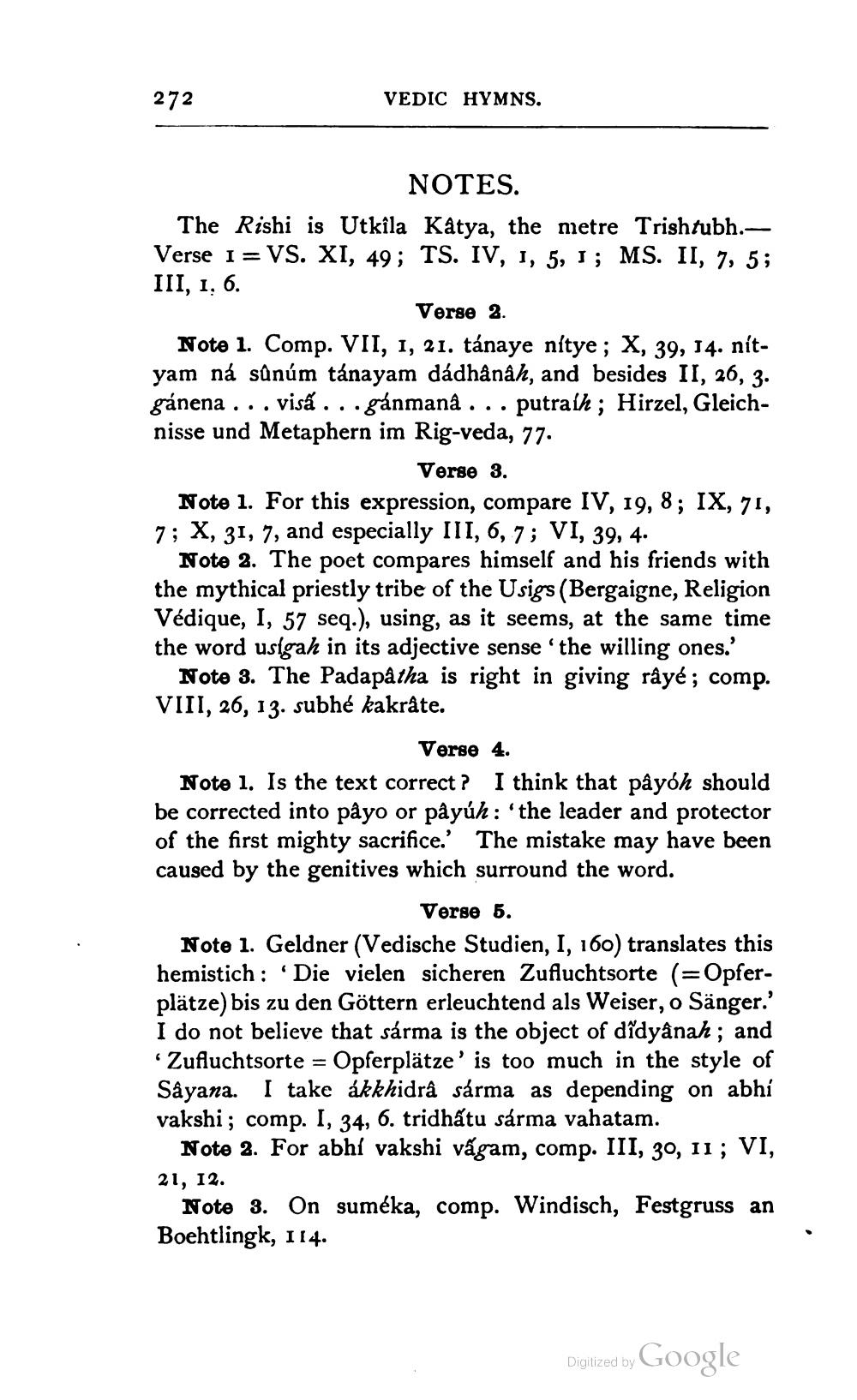________________
272
VEDIC HYMNS.
NOTES. The Rishi is Utkîla Katya, the metre Trishtubh.Verse 1 = VS. XI, 49; TS. IV, 1, 5, I; MS. II, 7, 5; III, 1, 6.
Verse 2 Note 1. Comp. VII, 1, 21. tánaye nítye ; X, 39, 14. nítyam ná sûnúm tánayam dádhånâh, and besides II, 26, 3. gánena ... visā . . .gánmanâ . . . putraih; Hirzel, Gleichnisse und Metaphern im Rig-veda, 77.
Verse 3. Note 1. For this expression, compare IV, 19, 8; IX, 71, 7; X, 31, 7, and especially III, 6, 7; VI, 39, 4.
Note 2. The poet compares himself and his friends with the mythical priestly tribe of the Usigs (Bergaigne, Religion Védique, I, 57 seq.), using, as it seems, at the same time the word usígah in its adjective sense the willing ones.'
Note 3. The Padapatha is right in giving râyé; comp. VIII, 26, 13. subhé kakråte.
Verse 4. Note 1. Is the text correct? I think that pâyóh should be corrected into pâyo or pâyúh: 'the leader and protector of the first mighty sacrifice.' The mistake may have been caused by the genitives which surround the word.
Verse 5. Note 1. Geldner (Vedische Studien, I, 160) translates this hemistich: 'Die vielen sicheren Zufluchtsorte (=Opferplätze) bis zu den Göttern erleuchtend als Weiser, o Sänger.' I do not believe that sárma is the object of didyânah; and * Zufluchtsorte = Opferplätze' is too much in the style of Såyana. I take akkhidrà sárma as depending on abhi vakshi; comp. I, 34, 6. tridhấtu sarma vahatam.
Note 2. For abhí vakshi vấgam, comp. III, 30, 11; VI, 21, 12.
Note 3. On suméka, comp. Windisch, Festgruss an Boehtlingk, 114.
Diglized by Google




